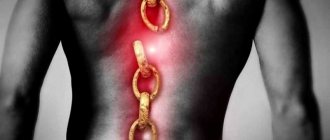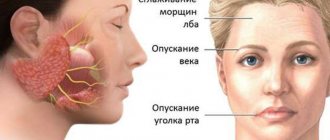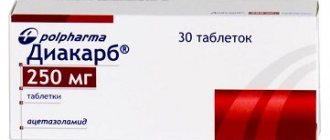If you've only had one pinched nerve in your life, consider yourself lucky, as this painful condition tends to recur. Depending on the location in the body and the severity of the problem, the pain can be quite severe.
A pinched nerve means damage caused by compression, narrowing, or stretching of the nerve.
Trauma or poor posture during the day or during sleep are the most common causes of a pinched nerve with subsequent inflammation. Other causes include arthritis, misaligned vertebrae, bone spurs and herniated discs.
If a nerve is pinched, the following symptoms may occur: numbness, burning, or sharp pain that radiates to other parts of the body. Sometimes symptoms get worse when you try to make certain movements, such as turning your head or straining your neck.
A pinched nerve often occurs in the neck or lower back, but the pain can travel to the elbows, arms, wrists, or fingers.
Pain from a pinched nerve can make you miserable when it interferes with your daily activities and even sleep.
If not treated promptly, it can lead to carpal tunnel syndrome, bursitis (tennis elbow), sciatica and other serious conditions.
A pinched nerve can usually be treated at home, as many home remedies can relieve symptoms and promote healing. But if the pain is so severe that it affects your ability to move, you should see a doctor.
Below are the 10 best home remedies to treat a pinched nerve.
Correct your posture
Since poor posture is one of the leading causes of nerve impingement, the first thing to do is improve your posture, changing it in sitting and standing positions will help relieve pain and may even reduce compression and narrowing of the nerve.
If you have a pinched nerve in the cervical spine, be sure to keep your chin in a neutral position—not too far forward or back. At the same time, your shoulders should be in a vertical plane. This position can be maintained by gently squeezing your shoulder blades together.
Always sit up straight and keep your body straight and upright while walking or standing. Don't hunch over. By focusing on maintaining proper posture, you can easily heal a pinched nerve in your neck or back.
Risk factors
Certain factors put people at greater risk of experiencing nerve compression or pinching. These factors include:
- Previous fracture or dislocation in the area.
- Scar tissue and/or myofascial tension.
- Bone spurs/arthritis.
- Hematoma or swelling.
- Cysts.
- Repetitive or prolonged activity requiring repeated movements.
- Systemic diseases such as diabetes.
Because compression neuropathies are so varied in signs, symptoms, causes, and locations, it is imperative for the physician to perform a thorough history and physical examination to rule out more serious conditions.
Ensure a state of rest
Regardless of where the nerve is pinched or what caused it to be pinched, you need to provide a state of rest to the affected area of the body, and the longer this lasts, the better. Sometimes this is difficult to do, but remember that rest for nerve healing cannot be underestimated.
In fact, rest is a very effective way to treat a pinched nerve in the neck, for example.
Avoid any activities that cause you pain, such as tennis, golf, or sedentary work. Remain quiet until the pinching symptoms are completely relieved.
Along with limiting daytime activities, increase the amount of sleep you get, which will give your body more time to heal. If necessary, use a neck brace to limit movement while you sleep. Avoid sleeping on your stomach; Try sleeping on your back or side.
To quickly heal a pinched nerve in your lower back, try to raise your legs a few centimeters when you lie down while sleeping or resting.
Treatment
Treatment for a pinched nerve requires the doctor to consider many variables specific to the individual. The degree of compression, the location of the compression, and the current stage of the recovery process (acute, subacute or chronic stage) all must be taken into account.
Since this condition is usually not life-threatening, it is important to keep moving. A physical therapist or health care professional can tell you what exercises and movements to avoid to prevent further nerve irritation. Clinicians should begin with nonsurgical treatment options and also consider surgery if conservative approaches have failed.
Non-surgical treatment
- To eliminate the underlying mechanisms causing nerve irritation, postural and biomechanical correction are important. The practitioner should also be aware of existing movement patterns that may cause the nerve to rub against or become pinched by surrounding tissue.
- The doctor may consider using non-steroidal anti-inflammatory drugs such as ibuprofen or naproxen to help reduce swelling around the nerve. Although steroids such as Cortisone are very effective anti-inflammatory drugs, their injections are not usually used because there is a risk of nerve damage associated with their use.
- Orthotics or splinting should also be considered as this allows the affected nerve to rest.
- Exercises to increase nerve glide may also be considered if the nerve is in an appropriate healing phase (this type of exercise is not used during the acute phase).
Surgery
Surgery should be considered as a last option for pinched nerve syndrome because... it may entail long-term rehabilitation treatment. Again, due to the variability that exists with this type of pathology, it is best to consult with a physician or neurosurgeon for the best options for the patient. Treatment may involve a simpler procedure such as local arthroscopic debridement or a more complex procedure such as neural decompression.
Use a cold compress
For temporary and quick relief from pain resulting from a pinched nerve, you can use a cold compress. The cold temperature will help relieve pain (as well as reduce swelling and inflammation) by numbing the affected area.
1. Place a few ice cubes in a sealed plastic bag.
2. Wrap the ice pack in a hand towel.
3. Press this bag onto the area with the pinched nerve for 10-15 minutes.
4. Repeat every hour or so if necessary.
Note. . Never apply bare ice directly to your body as it may cause a “burn” to the skin.
Inspection
Visual assessment
Visual inspection and palpation of the entire upper/lower limb, cervical or lumbar spine is mandatory. The examination should focus on limb asymmetry, muscle atrophy, or abnormal posture. The limbs should also be compared for changes in skin temperature and pulse quality in provocative positions.
Palpation
By applying pressure to the area where the nerve is believed to be compressed, the doctor can reproduce the patient's symptoms.
Upper limb
Sensorimotor testing and provocative maneuvers such as the Spurling sign, Tinel sign, median nerve compression test (upper limb nerve tension tests), Phalen test, and elbow flexion test may be helpful in diagnosing cervical radiculopathy or specific nerve entrapment syndromes.
Lower limb
Evaluation of the lower extremity should also include detailed sensorimotor testing of the peripheral nervous system of the lower back and lower extremity. Below are common nerve tension tests that may be performed in a clinic. These tests may provoke symptoms in the patient or, alternatively, symptoms such as tingling or numbness.
- Straight leg raise test.
- Slouch test.
- Thomas test.
Anesthetics and electroneuromyographic study
- If you inject a few milliliters of local anesthetic into the area of suspected nerve damage, you can reduce or completely eliminate the existing symptoms.
- Electroneuromyography can also confirm nerve damage. However, there is no consensus on the “gold standard” for diagnosis. Some experts believe that there are no ideal diagnostic methods (X-ray, ultrasound, MRI, scintigraphy) that could detect a pinched nerve.
- It is also important to note that a normal ENMG does not exclude symptomatic compressive neuropathy, especially in the early stages.
Apply heat
After the first day (24 hours) of suffering from a pinched nerve, you can apply heat to the affected area to relax the muscles that may be tight around the nerve.
Warmth provides comfort and helps the healing process as it improves blood circulation in the area of the damaged nerve.
1. Soak a cloth in warm water and squeeze out excess water.
2. Apply a warm compress to the affected area for 10 minutes.
3. Repeat as necessary.
You can also use a heating pad or hot water bottle.
Take an Epsom salt bath
Magnesium is crucial for the treatment of neuralgia. Epsom salt (Epsom salt, magnesium sulfate) is one of the best ways to maintain proper levels of magnesium in the body, which absorbs it very quickly from this salt.
Epsom salt also acts as a natural anti-inflammatory and can also help relax tight muscles around the pinched nerve area.
1. Dissolve 1 cup of Epsom salts in a bathtub filled with warm water.
2. Immerse your body in this solution for 15-20 minutes.
3. Use this home remedy 2 times a week until your condition improves.
Massage with warm oil
Massaging the affected area of the body with warm oil is another effective way to combat the sharp pain caused by a pinched nerve.
Massage activates pressure points, which in turn increases blood flow, relaxes stiff muscles, improves mobility and reduces pain.
1. Apply (by rubbing) a little warm oil of your choice - mustard, coconut or olive oil - onto the affected area of the body. If desired, you can add a few drops of peppermint oil.
2. Massage the area with soft strokes for 10-15 minutes.
3. Do this 2 or 3 times a day until you notice improvement.
Ask someone to help you if you cannot easily reach the affected area with your hand.
Use a castor oil pad
Castor oil is also useful in treating a pinched nerve. Its anti-inflammatory properties may help reduce inflammation and pain, helping to restore normal nerve function.
The correct way to use castor oil to relieve acute muscle and nerve pain is to create a castor oil patch.
- Fold a small piece of wool flannel fabric into quarters.
- Soak the folded cloth in warm castor oil, carefully removing any excess.
- Place a warm oil cloth on the affected area.
- Cover it with a piece of plastic and then a thin towel.
- Place a heating pad on top of the towel to keep the oil as hot as possible for about 1 hour.
- Repeat this treatment every few hours, daily, until your pain goes away.
Do stretching exercises
Gentle stretches can help relieve pressure on the nerves and relieve the symptoms of a pinched nerve. These exercises will ensure good blood circulation and relax stiff muscles, thereby aiding the healing process.
Stretching exercises can be done while sitting at your desk watching TV or during a few minutes of break at work.
• If you have a pinched nerve in your neck, slowly rotate your neck in a circular motion with your head clockwise and also in the opposite direction to stretch the pinched muscles. You can also slowly move your neck back and forth and from side to side.
• If there is a pinched nerve in your hand, rotate your hands and wrists clockwise and vice versa.
You can ask your doctor about other stretches that can increase circulation and mobility in the area of the pinched nerve.
Symptoms of a pinched peripheral nerve
In most cases, a pinched peripheral nerve causes the following symptoms:
- Tingling and numbness sensation
- Short-term or long-term loss of sensation in the area for which this nerve is “responsible”
- Severe neuropathic pain causing stabbing/electrical/burning sensations
- Progressive weakness to severe degree and even paralysis of the muscles innervated by the pinched nerve
- Muscular dystrophy
The longer the injury, the more obvious the symptoms will be. Loss of sensation, tingling and numbness may appear early, while symptoms associated with severe and progressive weakness and muscle atrophy will appear in later, more severe stages.
As mentioned, there are areas that are considered more susceptible to this type of injury, most notably the elbow (where the ulnar nerve passes), the wrist (where the median nerve passes), the knee (where the femoral nerve passes), and the foot ( through which the posterior tibial nerve passes. Symptoms characteristic of such lesions in most cases will be a feeling of tingling and numbness in the fingers, loss of sensation in certain places along the arm or leg, impaired sensitivity and muscle weakness in the area of the arm or foot, etc.
Turmeric
Turmeric helps reduce inflammation caused by a pinched nerve. In addition, it has soothing and analgesic properties that help relieve painful symptoms.
• Boil 1 teaspoon of turmeric powder in 1½ cups of coconut or almond milk. You can also add some cinnamon powder or a small piece of cinnamon. Strain and sweeten with honey. Drink this “curcumin” milk once or twice a day for several weeks.
• You can also take curcumin capsules. For the correct dosage, consult your doctor.
Acupuncture
Alternative treatments such as acupressure (acupressure) and acupuncture (acupuncture) can also help treat a pinched nerve. They help restore normal nerve function and provide pain relief.
These treatments apply pressure or needles to specific points on the body, causing the release of chemicals that either alter the perception of pain or create a feeling of well-being.
Keep in mind one important fact: positive results will only occur when acupressure or acupuncture therapy is performed by a skilled and experienced professional.
The vagus nerve or “look to the root”
The vagus nerve - the work of internal organs
Why is drug treatment of internal organs often ineffective?
We are often surprised... How so? I seem to live a healthy lifestyle, I don’t drink, I don’t smoke, I don’t abuse fatty and fried foods, but my stomach hurts. And so we go to the doctor with complaints of epigastric pain, intestinal upset, heaviness in the abdomen...
Very often, problems with the gastrointestinal tract are not associated with the internal organs themselves... but are associated with disturbances in the “control center” (nervous system), or more precisely with a disruption in communications between “(internal organs).
The human nervous system is conventionally divided into the central nervous system and the autonomic system.
Vegetative (literally translated as plant) - ensures the functioning of internal organs - breathing, digestion, secretory function of the glands, blood pressure regulation, etc. Thanks to the vegetative system, we don’t think about how to breathe or digest food, it happens somehow on its own.
The autonomic nervous system, in turn, is also divided into the sympathetic and parasympathetic systems. These systems oppose each other.
The sympathetic nervous system is responsible for a person’s readiness to hunt, attack or escape from pursuit - it stimulates an increase in blood pressure, increased respiration and heart rate, while suppressing the activity of the gastrointestinal tract.
The parasympathetic nervous system is responsible for a person’s “rest”, activates the gastrointestinal tract and the secretory function of the digestive glands, calming breathing, heartbeat and lowering blood pressure.
The main nerve of the parasympathetic nervous system is the vagus nerve.
This is a nerve that leaves the jugular foramen of the skull and descends along the neck into the chest and abdominal cavities, giving its branches to the internal organs. Unfortunately, this particular nerve is very often pinched at different parts of its path (at the level of the jugular foramen, thoracic aperture, thoracoabdominal diaphragm).
As a result of infringement of the vagus nerve, the sympathetic nervous system begins to dominate, inhibiting the activity of the gastrointestinal tract...
Food is poorly digested, intestinal motility, secretion of the pancreas and the stomach itself are disrupted... General health worsens, heaviness in the stomach area, a feeling of fullness even when taking a small amount of food, can often be accompanied by diffuse dull pain in the left rib cage, left side, central part of the abdomen under the sternum.
In this case, drug treatment will most likely be ineffective. It is necessary to identify the location of nerve compression and eliminate it.
If you have any questions, I will be happy to answer them.
Perhaps you need to undergo an examination (in Kiev) , or an MRI.










